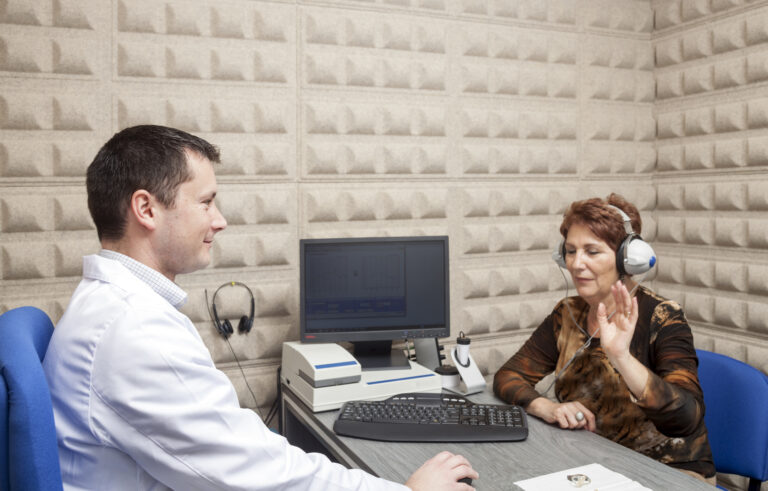Congenital hearing loss is defined as partial or complete hearing loss that is present at birth. Below we review the types, causes, symptoms, diagnosis and treatment of congenital hearing loss.
Types of Congenital Hearing Loss
There are three types of congenital hearing loss:
- Conductive hearing loss is caused by a physical blockage in the outer or middle ear, like a congenital deformity or fluid buildup.
- Sensorineural hearing loss is caused by damage to the sensory cells in the inner ear, auditory nerve or brain.
- Mixed hearing loss is a combination of conductive and sensorineural hearing loss.
Causes of Congenital Hearing Loss
There are many possible causes of congenital hearing loss:
- Genetics are responsible for hearing loss among 50% to 60% of children with hearing loss, according to the Centers for Disease Control and Prevention (CDC). More than 180 deafness genes have been studied as genetic causes of congenital hearing loss.
- Environmental factors can also affect a fetus, such as viral infections, bacterial infections, parasitic infections, use of alcohol and opioids, and jaundice.
- Birth factors such as premature birth, low birth weight and birth injuries can also affect hearing.
Symptoms of Congenital Hearing Loss
Symptoms of congenital hearing loss in newborns may be hard to spot, which is why testing is essential. In older children, symptoms include:
- Not responding to their name
- Difficulty following instructions at [LOCAL – PRESCHOOL]
- Delayed language skills
- Turning the TV up
- Liquid drainage from the ear
- Earache or tugging on the ears
- Dizziness or vertigo
- Tinnitus (ringing in the ear)
Diagnosing Congenital Hearing Loss
Most babies born in hospitals are screened for hearing loss within the first few days of their life. It’s recommended that all babies be screened for hearing loss no later than one month of age.
To diagnose congenital hearing loss, the following tests are administered:
- Auditory brainstem response (ABR) testing entails measuring the baby’s brain’s response to sounds using electrodes.
- Otoacoustic emissions (OAEs) testing measures how the baby’s inner ear responds to sounds using a probe with a microphone.
Treating Congenital Hearing Loss
Congenital hearing loss can be treated with:
- Hearing aids, which amplify sounds to a level the damaged ear can detect.
- Cochlear implants, which bypass the damaged parts of the ear.
- Sign language, which allows your child to communicate in a language that may be more natural to them.
For more information or to schedule an appointment, call Hill Country Audiology today.
